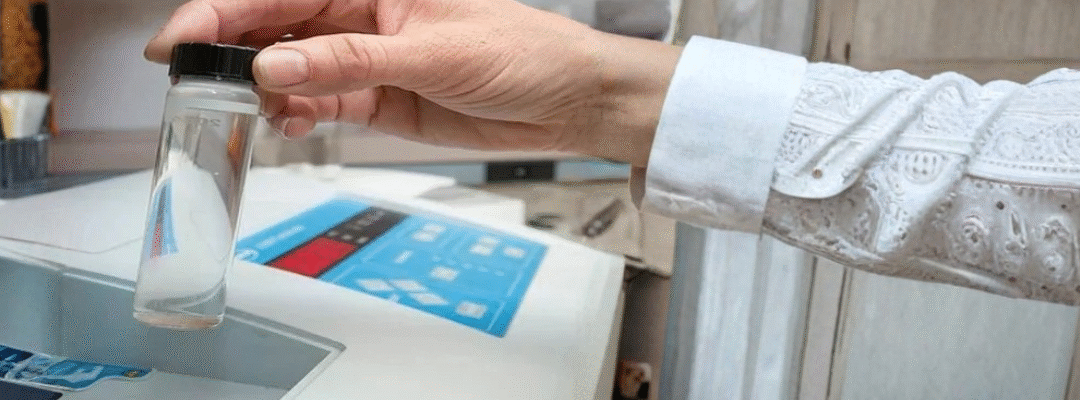Installing a Reverse Osmosis (RO) system is just the first step in ensuring safe, clean, and great-tasting drinking water. To keep your system running efficiently and confirm that your water meets drinking water standards (like BIS IS 10500:2012 or WHO guidelines), regular water quality testing is essential.
This guide walks you through:
- How to test RO water
- Key parameters to monitor
- Acceptable limits
- What the results mean for water safety and taste
1. Why Regular Testing Matters
Even a top-tier RO system can decline in performance due to:
- Membrane fouling
- Filter saturation
- Changes in feedwater quality
Regular testing helps you:
- Ensure membrane and filter performance
- Detect early signs of contamination
- Meet compliance for drinking or process water
- Maintain taste, clarity, and odor of purified water
Recommended Testing Frequency
| Application | Suggested Frequency |
|---|---|
| Domestic RO Units | Every 3–6 months |
| Industrial/Commercial RO | Monthly or post-maintenance |
2. How to Test RO Water Quality
RO water testing can be done in two main ways:
a) Quick Testing with Digital Meters
Use portable devices for basic, real-time testing:
- TDS (Total Dissolved Solids)
- pH Level
- Temperature
- Conductivity
Ideal for daily/weekly checks
b) Comprehensive Lab Analysis
Send samples to a certified lab for:
- Chemical, physical, and microbial testing
- Compliance with IS 10500:2012 or WHO drinking water standards
3. Key RO Water Parameters to Test
| Parameter | Ideal Range | Why It Matters |
|---|---|---|
| TDS | 50–500 mg/L | Affects taste; high = salty, low = flat |
| pH | 6.5–8.5 | Acidic water causes corrosion; alkaline alters taste |
| Hardness (CaCO₃) | < 200 mg/L | High levels lead to scaling |
| Chlorides | < 250 mg/L | Excess = salty taste, pipe corrosion |
| Nitrates | < 45 mg/L | High levels harmful to infants |
| Iron | < 0.3 mg/L | Causes discoloration and metallic taste |
| Fluoride | 0.6–1.0 mg/L | Needed in moderation; toxic above 1.5 mg/L |
| Turbidity | < 1 NTU | Measures clarity; high = suspended particles |
| Microbial Content | 0 CFU/100mL | Must be absent for safety |
| Residual Chlorine | < 0.2 mg/L | Damages membranes and causes odor |
4. Step-by-Step: Testing Your RO Water
Step 1: TDS Check
- Use a digital TDS meter
- Ideal: 50–150 ppm
Step 2: pH Measurement
- Use pH meter or strip
- Maintain: 6.5–8.5
Step 3: Hardness Test
- Use hardness kit or lab test
- Target: < 200 mg/L
Step 4: Microbial Test
- Use portable kits or lab testing
- Ensure 0 CFU/100 mL for E. coli or coliforms
Step 5: (For Industry)
- Additional tests: Silica, Conductivity, COD/BOD
5. Water Quality Standards Comparison
| Standard | TDS (mg/L) | pH | Hardness (mg/L) | Chlorides (mg/L) | Iron (mg/L) | Microbial Presence |
|---|---|---|---|---|---|---|
| BIS (IS 10500) | ≤ 500 | 6.5–8.5 | ≤ 200 | ≤ 250 | ≤ 0.3 | Absent |
| WHO | ≤ 600 | 6.5–8.5 | ≤ 300 | ≤ 250 | ≤ 0.3 | Absent |
6. Interpreting Test Results
| Observation | Likely Cause | Corrective Action |
|---|---|---|
| High TDS | Fouled or old membrane | Clean or replace membrane |
| Low pH (<6.5) | CO₂ absorption, acidic feed | Add pH correction cartridge |
| High Hardness | Pre-treatment issue | Check/replace softener or membrane |
| Foul odor | Carbon filter expired | Replace activated carbon filter |
| Bacteria detected | Contaminated storage or poor disinfection | Sanitize tank, check UV lamp or membrane |
| Cloudy water | Air bubbles or suspended solids | Flush filters, check for leaks |
7. Tools for RO Water Testing
- TDS Meter
- pH Tester or Litmus Strips
- Hardness Test Kit
- Conductivity Meter
- Microbial Testing Kit
- Certified Lab Testing Services
Pro Tip: Choose AMC (Annual Maintenance Contracts) from reliable service providers to include regular testing and maintenance.
8. RO Water Quality Maintenance Tips
- Change sediment and pre-filters every 6–8 months
- Replace carbon filters every 12 months
- Disinfect storage tanks quarterly
- Monitor TDS and pH regularly
- Use softener or anti scalant if water is hard
- Clean membranes (backwash or chemical) as needed
FAQs
Q1. How often should I test RO water?
Every 3–6 months (domestic), monthly for industrial units.
Q2. What is ideal TDS for RO water?
50–150 ppm is optimal; below 500 ppm is safe per BIS.
Q3. Why does RO water taste flat?
It lacks minerals. Use a mineral cartridge or TDS controller.
Q4. Can high TDS harm health?
Yes—may indicate nitrates, fluoride, or heavy metals.
Q5. What to do if microbes are found?
Sanitize the tank, check UV lamp, and test again.


Recent Comments